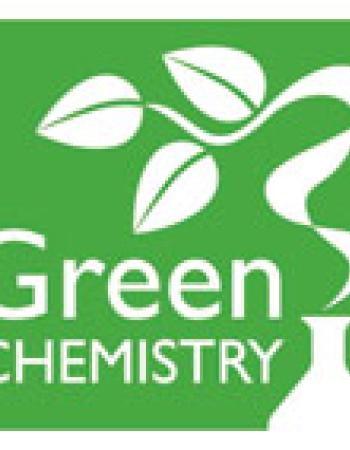Chem 640 - Advanced Organic Synthesis
Course Objectives and Learning Outcomes
Course Description:
The objective of this module is to provide the student with a thorough understanding of the mechanistic aspects of organic chemistry by describing a variety of modern synthesis methods for transformation of functional groups as well as formation of new carbon-carbon and carbon-hetereatom bonds. A problem solving approach is employed in order to develop the ability to elucidate information, both qualitative and quantitative, concerning reaction mechanisms from experimental data.
Couse Main Objective
An in-depth treatment of various aspects of organic synthesis. This will include such topics as oxidation and reduction, reaction and mechanism, synthetic strategies, rearrangements, a detailed discussion of organic retrosynthesis and applications.
Course Learning Outcomes
I. Knowledge: On successful completion of this course it is expected that students will be able to:
1.1 Memorize the different common names of organic synthesis
1.2 List different oxidizing and reducing reagent
1.3 Write structure, describe physical properties of 5 and 6-membered heterocyclic rings with one or more than one heteroatom.
Recognize and classify type reaction.
II. Skills: On successful completion of this course it is expected that students will be able to:
2.1 Discuss predict reactivity of different reagents
2.2 Explain the retro-synthesis; Differentiate between oxidation and reduction in different condition; Reorganize and type of sigmatropic rearrangements; Discuss how to carry out function group inter-conversion.
III. Competence: On successful completion of this course it is expected that students will be able to:
3.1 Demonstrate synthesis of different organic compounds
3.2 Demonstrate different reaction in different conditions
3.3 Research the application for different organic synthesis
3.4 Demonstrate the importance of different reagents in organic synthesis
Course Introduction
I. Retrosynthetic analysis: Strategic disconnections
(Retrosynthetic analysis: Disconnections with polarity reversal (umpolung)
Oxidations
I. Metal Bases Reagents
1. Chromium Reagents
2. Manganese Reagents
3. Silver
4. Ruthenium
5. Other metals
II. Non-Metal Based Reagents
1. Activated DMSO
2. Peroxides and Peracids
3. Oxygen/ Ozone
4. Others
III. Epoxidations
IV. Reduction (Reduction of Carbonyl and Other Functional Groups)
1. Hydride-Transfer Reagents
2. Hydrogen-Atom Donor
Dissolving Metal Reductions
V. Six-Membered rings (Pyridine, quinoline and diazine): properties, preparation and reactions.
VI. Carbon-Carbon Bond Formation
1. Alkylation of enolates, enamines and hydrazones
2. Alkylation of heteroatom stabilized anions
3. Umpolung Smith
4. Organometallic Reagents
Sigmatropic Rearrangements
VII. Functional Group Inter-conversions
1. sulfonates
2. halides
3. nitriles
4. azides
5. amines
6. esters and lactones
7. amides and lactams
Methods in Organic Synthesis - Retrosynthetic Analysis
1. Retrosynthesis
Importance of Synthesis. Concepts and terminology of retrosynthetic analysis.
Problem of identifying disconnections. Guidelines for choosing disconnections and evaluating routes.
2. Functional Group Interconversions
Example problem illustrating concepts fro FGI. Chemeregio and stereoselectivity issues.
3. Retrosynthesis of Hydrocarbon Targets
Preparation of alkenes. Revision of Wittig and Julia coupling reactions.
Prep from alkynes. Forming C-C bonds by cross coupling reactions.
Formation of organometal reagents.
4. Example problem illustrating C-C, C=C formation.
Scope of SN2 reaction using carbon nucleophiles.
5. Retrosynthesis of Monofunctional Targets.
Revision of key reactions: nucleophilic addition to carbonyl and carboxyl compounds, enolate reactions, conjugate additions.
6. Example problem illustrating addition to carbonyls and enolate reactions. Disconnect at branch points, chains from rings.
7. Problem solving/tutorial.
8. Example problem illustrating conjugate addition and tandem conjugate addition/enolate alkylation.
9. Retrosynthesis of Difunctional Targets. Disconnect between functional groups. Rogletimide: natural polarity.
10. Reversed polarity synthons Expoxides, cyanide, dithianes etc. Example problem.
Learning Resources:
I. Required Textbooks
1. Required textbook: Carey, F.A.; Sundberg, R.J. Advanced Organic Chemistry Part B: Reactions and Synthesis, 5th edition.
2. Hand-outs distributed in class
II. Essential Reference Materials
1. Nicolaou, K.C.; Snyder, S.A. Classics in Total Synthesis II, VCH: New York, 2003.
2. Carey, F.A.; Sundberg, R.J. Advanced Organic Chemistry Part A: 4th edition,Plenum: New York, 2001.
III. Electronic Materials
1. https://www.acdlabs.com/iupac/nomenclature/
IV: Other Learning Materials
1. Power point presentations
2. Multimedia associated with text book
COURSE ASSESSMENT TOOLS AND THEIR GRADE DISTRIBUTION
TASK/MARKS (100)
Quiz 1 / 5% - 3rd week
Quiz 2 / 5% - 6th week
Midterm Exam / 30% - 10th week
Project / 10% - 12th week
Homework / 10% (5%each) - 5th week & 7th week
Final Exam / 40% - 17th week
Total / 100%

